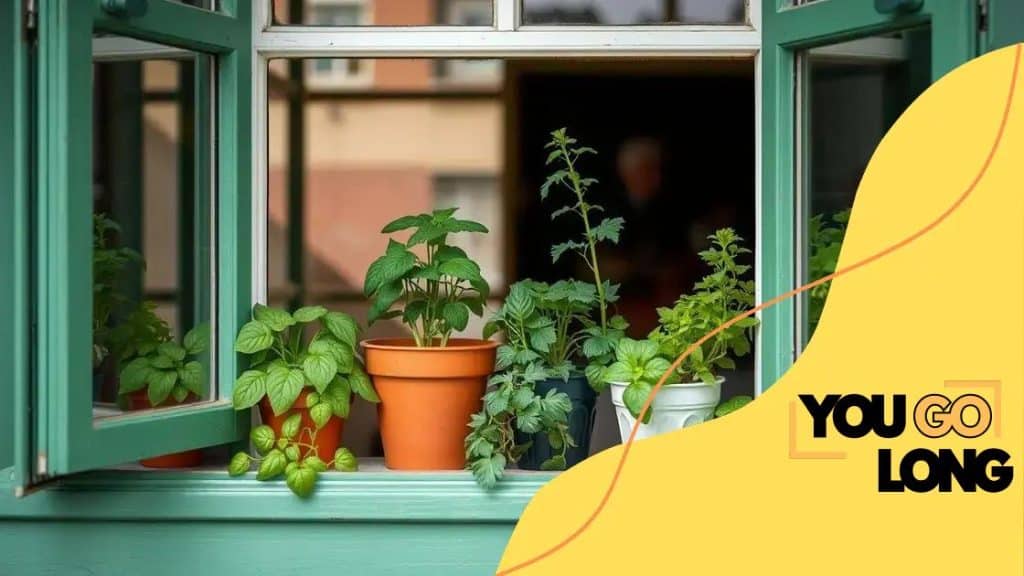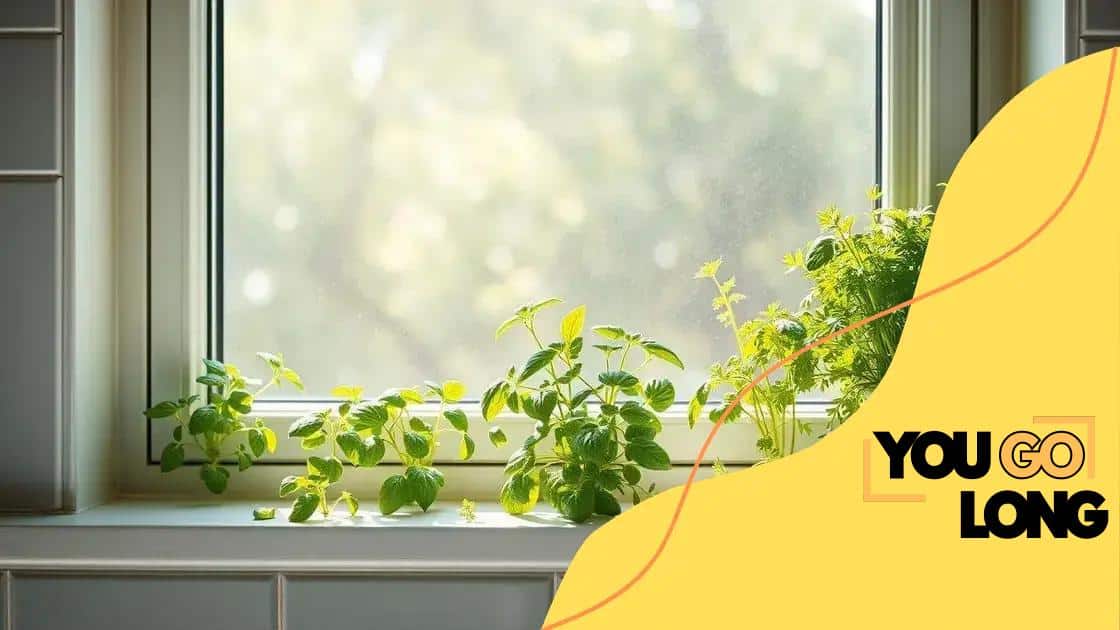How to start a herb garden in your kitchen

Advertisement
To start a herb garden in your kitchen, choose a sunny spot, select containers with drainage, regularly water and fertilize your herbs, and harvest frequently for optimal growth and flavor.
How to start a herb garden in your kitchen is easier than you might think. Imagine having fresh basil, parsley, and mint right at your fingertips. Let’s dive into how you can create this green paradise in your culinary space.
Choosing the right herbs for your kitchen
Choosing the right herbs for your kitchen can make a big difference in your cooking. Fresh herbs can add tremendous flavor to your meals. By growing your favorites at home, you’ll always have them on hand.
Popular Herbs to Grow
Some herbs are easier to grow indoors than others. Here are a few popular choices:
Advertisement
- Basil: Great for pasta dishes and pizzas.
- Parsley: A versatile herb for seasoning many dishes.
- Cilantro: Perfect for salsas, salads, and various cuisines.
When deciding which herbs to plant, consider your cooking habits. Do you often make Italian food? Then basil is a must. If you enjoy Mexican cuisine, cilantro will be useful. Also, think about your preferences. Choose herbs you love and will use often.
Considerations for Growing
Some herbs prefer more sunlight, while others do well in partial shade. Be sure to place your pots in a location where they can thrive. You can also mix different types of herbs in one container, just make sure they have similar light and water needs. Herb gardening in your kitchen is rewarding, and it helps to have the right support.
Selecting containers for herb gardening
Selecting containers for herb gardening is essential for success. The right container can provide the best environment for your herbs to grow strong and healthy. Consider your space, whether you have a small kitchen or a sunny balcony.
Advertisement
Types of Containers
There are many options for containers, and each type serves a specific purpose. Here are few popular choices:
- Clay Pots: They are porous, allowing air and moisture to flow freely, which is great for herbs.
- Plastic Pots: Lightweight and often less expensive, these pots retain moisture well.
- Raised Beds: Ideal for more extensive herb gardening, providing excellent drainage and space.
Choosing the right size is also important. For most herbs, 6 to 12-inch pots are perfect. Larger plants like basil may need more space to grow.
Drainage is Key
Ensure your containers have drainage holes. Without proper drainage, herbs can struggle with overwatering. You can add a layer of rocks or gravel at the bottom of the pot to help with this issue.
Additionally, think about how many herbs you want to grow. Grouping similar herbs together can make maintenance easier. Mixing herbs that need similar light and water is a smart way to grow.
Ideal locations for your herb garden

Ideal locations for your herb garden can greatly influence how well your plants grow. It’s essential to find a spot with the right conditions to ensure flourishing herbs. Start by considering how much sunlight your chosen location receives.
Sunlight Requirements
Most herbs need about 6 to 8 hours of sunlight daily. The best places for your herb garden include:
- Kitchen Windowsills: Bright, sunny areas are perfect for quick access while cooking.
- Balconies: They often provide ample sunlight and can be a great space-saving option.
- Patios: If you have an outdoor patio, it can serve as a lovely herb garden spot.
Evaluate the light levels in each spot throughout the day. Take note of how the sunlight shifts, so you can choose the most optimal locations for each herb type.
Temperature and Protection
Besides sunlight, consider the temperature of the chosen location. Herbs generally thrive in warm conditions. If you live in a colder climate, keep your herbs near a heat source or indoors during winter months. Moreover, protect your plants from harsh winds and heavy rain by placing them in sheltered areas.
Remember, growing conditions might vary based on the specific herbs you are cultivating. For example, basil loves warmth, while parsley can tolerate cooler temperatures. Always match herbs with their growth preferences for a successful garden.
Essential care and maintenance tips
Essential care and maintenance tips are crucial for a thriving herb garden. Proper attention can lead to a bountiful yield of herbs you can enjoy right from your kitchen. Even small changes in care can greatly affect growth and health.
Watering Your Herbs
Watering is one of the most important aspects of herb care. Herbs generally prefer to dry out slightly between waterings. Overwatering can lead to root rot, while underwatering can stress the plants. Aim to water your herbs when the top inch of soil feels dry. Here are some tips:
- Check Soil Moisture: Use your finger to feel the soil before watering.
- Water in the Morning: This helps prevent diseases that thrive in wet conditions.
- Drainage Matters: Ensure pots have good drainage to avoid standing water.
In colder weather, reduce watering as herbs enter a slower growth phase. Always observe your plants and adjust your watering schedule as needed.
Fertilizing Your Herbs
Fertilizing helps ensure your herbs are getting necessary nutrients. Use a balanced fertilizer every 4-6 weeks during the growing season. Consider organic options such as compost or fish emulsion. Be cautious, as too much fertilizer can lead to excessive growth and loss of flavor.
Regularly trimming your herbs is also beneficial for growth. Pruning encourages bushiness and prevents flowering, which can alter the flavor. Harvesting herbs frequently helps maintain their size and can actually lead to more growth. Always use sharp scissors or shears to avoid damaging the plants.
Harvesting and using your herbs effectively
Harvesting and using your herbs effectively is key to making the most of your kitchen garden. When it comes time to pick your herbs, make sure to do so gently to ensure healthy growth. Harvesting regularly encourages plants to produce more leaves.
Best Practices for Harvesting
To get the best flavor and health from your herbs, follow these tips:
- Use Sharp Scissors: Sharp tools prevent damage to the plant.
- Harvest in the Morning: Morning is when the oils are most concentrated.
- Pick Leaves from the Top: This promotes bushier growth.
When you do harvest, only take a few leaves from each plant. This way, you allow the herb to continue growing. If herbs start to flower, trim off the flowers to maintain stronger flavors.
Using Your Herbs
There are many ways to use the herbs you gather. Fresh herbs can elevate both simple and elaborate dishes. Adding them at the end of cooking helps retain their vibrant flavors. Some delicious uses include:
- Garnishes: Fresh herbs make great garnishes on dishes.
- Flavor Boosters: Mix into dressings and marinades for added depth.
- Herbal Teas: Use leaves like mint or chamomile to brew relaxing teas.
Many herbs can also be dried and stored for later use. To dry herbs, hang them upside down in a dark, cool place. Once dried, store in airtight containers. This way, you can enjoy the flavors of your herb garden year-round.
FAQ – Frequently Asked Questions About Starting a Herb Garden in Your Kitchen
What are the best herbs to grow in my kitchen garden?
Some popular herbs to grow include basil, parsley, cilantro, and mint, as they are easy to maintain and enhance many dishes.
How much sunlight do my herbs need?
Most herbs require about 6 to 8 hours of sunlight each day for optimal growth.
How often should I water my herbs?
Water your herbs when the top inch of soil feels dry. Overwatering can lead to root rot.
Can I use dried herbs instead of fresh herbs?
Yes, dried herbs can be used, but fresh herbs typically have a stronger flavor. You can dry your fresh herbs for later use.





